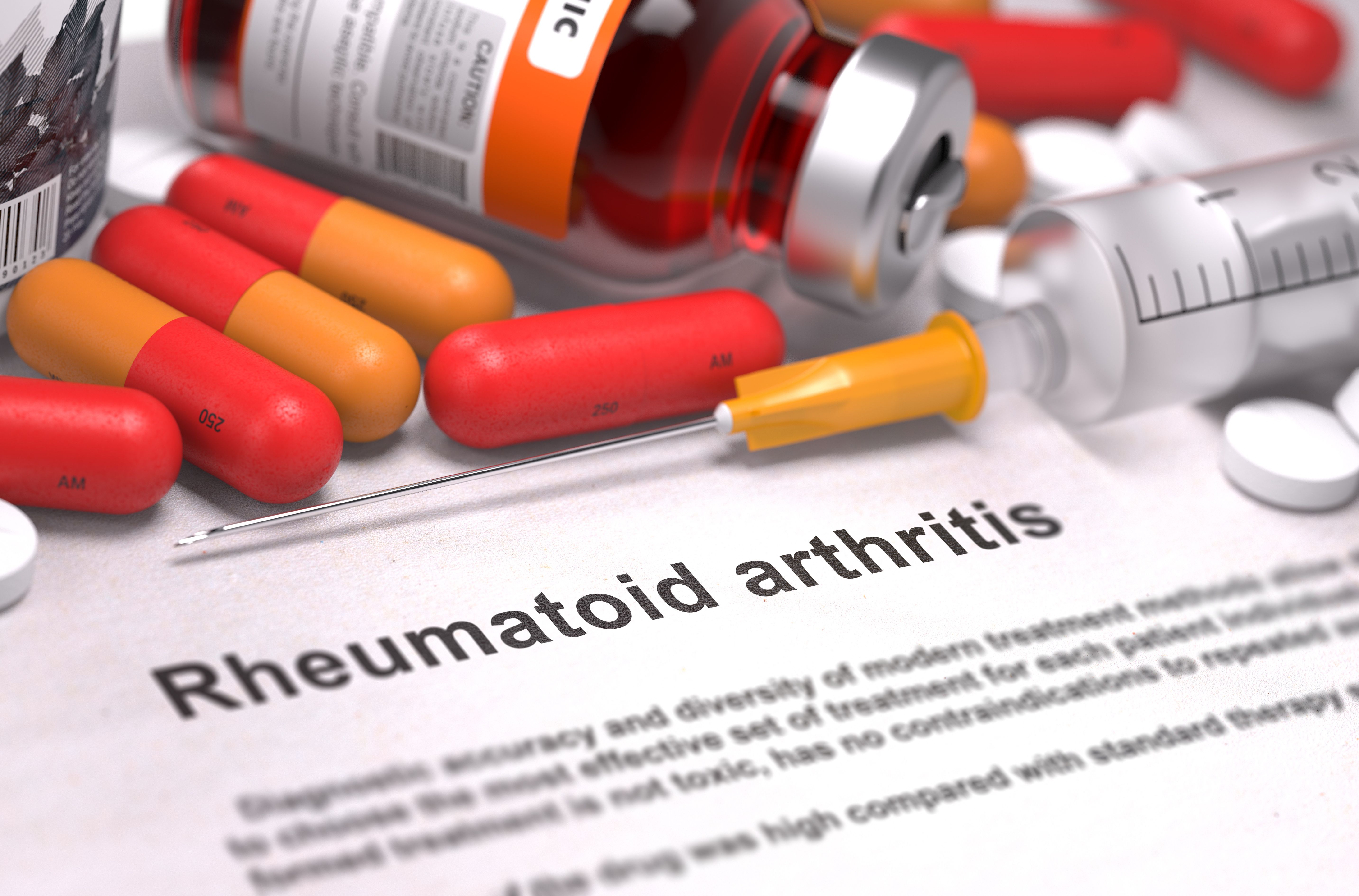- Bone Health
- Immunology
- Hematology
- Respiratory
- Dermatology
- Diabetes
- Gastroenterology
- Neurology
- Oncology
- Ophthalmology
- Rare Disease
- Rheumatology
Study Shows Similar Efficacy, Drug Survival Rates for Etanercept Biosimilar vs Originator in RA
A national study on patients with rheumatoid arthritis (RA) compares the disease activity and drug survival rate between an etanercept biosimilar and the originator (Enbrel).
Image Name | Image Credit: tashatuvango - stock.adobe.com

Among patients with rheumatoid arthritis (RA) registered with the British Society for Rheumatology Biologics Register in Rheumatoid Arthritis (BSRBR-RA), those treated with etanercept biosimilar showed similar treatment responses and drug survival rates vs those treated with etanercept originator. The findings were published in Rheumatology.
In the early 2000s, etanercept was one of the first biologic therapies licensed as a treatment method for patients with RA. The observational BSRBR-RA study monitors the long-term safety of biologics in routine practice, and for the current study, patients enrolled from 2010 were included. The authors aimed to compare outcomes of the originator vs the biosimilar after 6 and 12 months of therapy.
Patient characteristics included age, gender, disease duration, disease activity using core outcome variables, patient global visual analogue scale, erythrocyte sedimentation rate (ESR) and/or C-reactive protein (CRP) and the 28-joint DAS, functional ability using the health assessment questionnaire (HAQ), and the current or previous anti-rheumatic therapies they received. The observational prospective cohort study operated from January 1, 2010, to June 16, 2022, where every patient had at least 1 year of follow-up.
The core outcome variables of disease activity, DAS28, and HAQ were reviewed at baseline, 6 months, and 1 year. Statistics were calculated using the proportion of patients who achieved DAS28 remission (DAS28 < 2.6), European Alliance of Associations for Rheumatology (EULAR) response (good: 6-month DAS28 ≤ 3.2 and improvement > 1.2 units; no response: 6-month DAS28 ≤ 5.1 and > 3.2 with improvement ≤ 0.6 units; moderate all others), and minimal clinically important difference (MCID) in HAQ (reduction in HAQ score ≥.22 units). Primary outcome statistics were DAS28 remission, any EULAR response (moderate and good vs no response), good EULAR response (vs moderate/no response) and MCID in HAQ. Ethnicity, joint surgery history, anti-CCP positivity, rheumatoid factor (RF) positivity, smoking status, disease duration, and body mass index were among additional variables included to offset any missing data.
Drug survival was calculated using the Kaplan-Meier method amongst cohorts, adjusted by propensity deciles. The study utilized the Cox proportional hazards model to compute the regression of patients on etanercept originator who halted therapy after time in comparison to patients on the biosimilar, modified by propensity deciles. Analyses were determined using Stata version 14, a multilevel survey model.
Results demonstrated similar disease activity between the cohorts starting etanercept as their first biologic of the originator vs the biosimilar. Each cohort had a median improvement of DAS28 from baseline to 6 months, with a median improvement of 2.4 units at 6 months and a median of 2.5 units at 1 year. Patients with RA reached DAS28 remission at 6 months of therapy in 26% of the originator group and 31% of the biosimilar participants. The classification of a good EULAR response was met by 38% of the originator cohort after 6 months while the biosimilar group achieved 45%. After 6 months, 41% of the originator cohort attained MCID in HAQ while the biosimilar cohort was at 47% (95% CI, 0.57-0.97). Both the etanercept originator and biosimilar cohorts had 35% of patients achieve MCID in HAQ from baseline to 1 year. The Cox proportional hazards model proved etanercept originator group versus the biosimilar group were no more likely to stop therapy than the other one (95% CI, 0.99-1.33).
Study limitations were mainly the large gap of time between the approval of the originator drug to the earlier approval of the 2016 biosimilar. This could likely lead to bias since the biosimilar patients had less follow-up in comparison to the originator participants. The study focused on patients from 2010 and beyond because patients with RA may be vastly different to those of more recent.
The national cohort study proved the etanercept originator had closely similar treatment effects on the patients beginning the biosimilar regarding disease activity and drug survival. Neither group was more likely to halt etanercept therapy after 1 year with 71% on the originator and 76% on the biosimilar. The authors conclude, “These data are reassuring to both patients and clinical teams when considering starting etanercept originator or biosimilar therapy as their first biologic”.
Reference
Kearsley-Fleet L, Rokad A, Tsoi MF, et al. Etanercept originator versus etanercept biosimilar for the treatment of rheumatoid arthritis as a first biologic: results from the BSRBR-RA. Rheumatology (Oxford). 2023;62(12):3849-3857. doi:10.1093/rheumatology/kead127
Newsletter
Where clinical, regulatory, and economic perspectives converge—sign up for Center for Biosimilars® emails to get expert insights on emerging treatment paradigms, biosimilar policy, and real-world outcomes that shape patient care.
